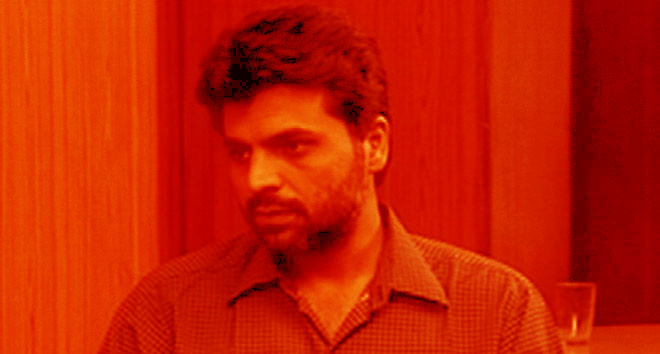
By Irfan Ahmad
ARGUMENT: Yakub Memon’s execution presupposes and enacts two different peoples subjected to two laws under the same Constitution (if so, inferentially, the Constitution is far from one).
ELABORATION: A key Hindutva slogan – attributed to Dr Syama Prasad Mookerjee, founder of Bharatiya Jan Sangh (BJS) – was: ‘Ek desh mein do vidhan, Ek desh mein do Pradhan, Ek desh mein do Nishaan nahi chalengen!’ (In one country two Constitutions; in one country, two Prime Ministers, in one country two flags, will not be tolerated, p.96). The slogan related to the refusal of the terms of Kashmir’s merger into India by Hindutva group. The slogan and its idea were later deployed to annihilate every difference under the bogey of treason against and threats to nation. Homogeneity and uniformity, empirical as well as normative, became order of the day, not just for BJS but also (and equally) for many who belonged to its ‘opposition’ Congress.
“…was this not done to appease the vote bank of the majority which often remains hidden but ubiquitous behind every move, political as much as juridical? Were the culprits for the post-Babri Masjid demolition killings not brought to justice because of lack of evidence or lack of political will? How about the biased roles of police which rather than save the innocents participated in killing them?”
Curious to note here is that the praxis of eradicating difference occurred with the simultaneous rhetoric of recognising difference. The eradication of differences occurred not only vis-à-vis Muslims. To be sure, there were other individuals, communities and groups, notably Dalits. However, the bogey of national treason / disloyalty / enemy was reserved for Muslims (thus it is wrong to say that Muslims have not enjoyed the policy of reservation) even as there were far, far more number of Hindus who worked in practice against “national interests” and for the ISI (Ajit Doval in a public talk on March 11, 2014 in Melbourne).
Mookerjee’s legacy of uniformity and homogeneity was continued by Balraj Madhok, new president of BJS, subsequently to become BJP. In 1970, Madhok published Indianisation, which, among others, dealt with minorities, including Christians. The crux of Madhok’s missionary programme for an Indian Islam was that Muslims relinquish their identity and begin to fervently participate in religious-cultural festivals and institutions of Hinduism which he equated with ‘nation’ and which, contra Islam, was presented as modernity embodied. Messrs Advani, Vajpayee and Modi further carried forward this legacy.
There are more qualified people than I am to comment on the legality of Memon’s execution. My point is this: if it is constitutional, right and moral to execute Memon for his involvement in the series of blasts that killed over 200 people, should not the same argument, intensity of emotion, gusto of political love and logic of ethics be extended to execute those responsible for the killings of over 800 people only weeks before the blasts?
That we did not do so is obvious. The questions crying for answers, then, are: was this not done to appease the vote bank of the majority which often remains hidden but ubiquitous behind every move, political as much as juridical? Were the culprits for the post-Babri Masjid demolition killings not brought to justice because of lack of evidence or lack of political will? How about the biased roles of police which rather than save the innocents participated in killing them?
Why no action was taken against Bal Thackeray, the Shiv Sena leader, and his party activists who openly incited, participated in and legitimized killings (there is sufficient evidence in reports commissioned by the government)? Why the collective conscience remained untouched when in an interview to Time magazine, Thackeray held that there was “nothing wrong if they (Muslims) are treated as Jews were in Nazi Germany” (chapter 6). The last rite of Thackeray witnessed the whole city come to a standstill and the government bestowing legitimacy and honour on him.
This shows that the government, its various agencies, most of mainstream media, including the honourable judges, work with the premise of two peoples in mind. The law quickly takes its course in one case whereas in another case law shamelessly remains still, frozen and paralysed. Does not the swiftness of law for one people and inaction of the same law for “another people” mean two Indias and thus two desh(s)?
There was a discourse (relating to Charan Singh and his associates) according to which Bharat (rural-peasants) was pitted against India (urban-industrial). Can one say that Memon’s execution reflects two Indias: judicially active India vs judicially silent India; judicially activated India vs judicially silenced India; judicially victorious India vs judicially defeated and disempowered India; an India within the parameters of law versus an India beyond and above the law (also recall the chilling killing of lawyer Shahid Azmi with no action taken so far)?
Only a pseudo-democracy will endorse the enactment of two peoples and two laws for similar and identical violence and crimes. Those who don’t object to this pseudo-democracy molest and participate in the travesty of democracy and thereby in the travesty of justice itself.
To the question if there are differences between the Congress and BJP over the entire episode, the honest answer would be: come on, shall we go for tea to Ganga Dhaba? Put otherwise, the difference is only of academic interest! When one knows that a cricket Test match will end in a draw, journalists say, to continue to play and watch it is only of academic interest.
….
Irfan Ahmad is Associate Professor of Political Anthropology at the Australian Catholic University, Melbourne and author of ‘Islamism and Democracy in India’, which was short-listed for the 2011 International Convention of Asian Scholars Book Prize for the field of Social Sciences.
